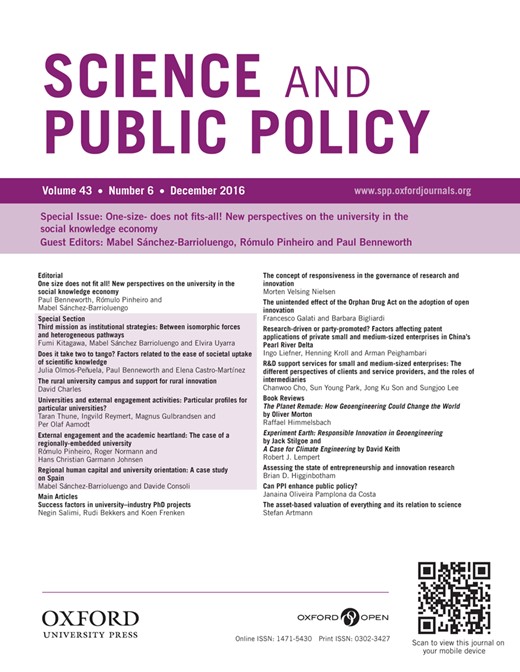-
Views
-
Cite
Cite
Raffael Himmelsbach, The Planet Remade: How Geoengineering Could Change the World by Oliver Morton, Science and Public Policy, Volume 43, Issue 6, December 2016, Pages 872–873, https://doi.org/10.1093/scipol/scw022
Close - Share Icon Share
Extract
Oliver Morton, a science writer and briefings editor at The Economist with a self-declared penchant for attending scientific gatherings on ‘far out’ (p. 139) topics, has tracked geoengineering since the 1990s, long before it became a mainstream topic in the mid-2000s. He is an insider of the geoengineering meetings circuit who sympathizes with the worldview of the main geoengineering proponents, calling them ‘men of empire’ who dare to think big and bold. The book’s purpose it to enable you—the reader—to imagine a geoengineered future as boldly as they do (p. 30). Such imagination is necessary, Morton contends, if one accepts the two premises that, firstly, climate change is a risk that warrants action; secondly, that ridding humanity of its fossil fuel dependency is too slow a process on its own.
In 12 accessible and well-narrated chapters Morton provides us with the tools he thinks we need for doing our own imagining. This scenario building kit encompasses the earth system, the ‘levers’ that could intervene in that system, and a license to think bolder than we dare imagine. Chapter 1 introduces the atmosphere through a 20th century environmental history of the ozone layer and nuclear fallout. The earth system is discussed in Chapter 2 and is, as Morton brilliantly shows, a linguistic construction for understanding and conceptualizing planet earth as a single, interconnected system through physics, metaphor and perspective. Embracing the notion of the earth system is important for Morton, as it enables him to search for (technological) ‘levers’ and (institutional and material) ‘fulcrums’ with which to move it (p. 81). Cooling the atmosphere through spraying reflective particles into the stratosphere (stratospheric aerosol injection (SAI)), which is ultimately Morton’s technology of choice, mimics the effect of a large volcanic eruption (e.g. Tambora, Krakatau, Pinatubo), which ejects masses of dust and particles of sulfuric acid into the sky. How climate science detected the cooling effects of volcanoes is the story told in Chapter 3, while Chapter 4 looks at how this process might be optimized through a better delivery mechanism (planes) and the development of the perfect reflecting particle. Morton then dwells on computer modeling of SAI scenarios which, he contends, deliver some disconcerting findings, but also enough positive insights to warrant further investigation. Crucially, Morton reminds us that SAI:
… is not an antidote to climate change. It is an additional form of climate change, one that has some effects that oppose those of the climate change brought on by greenhouse warming. (p. 114)



